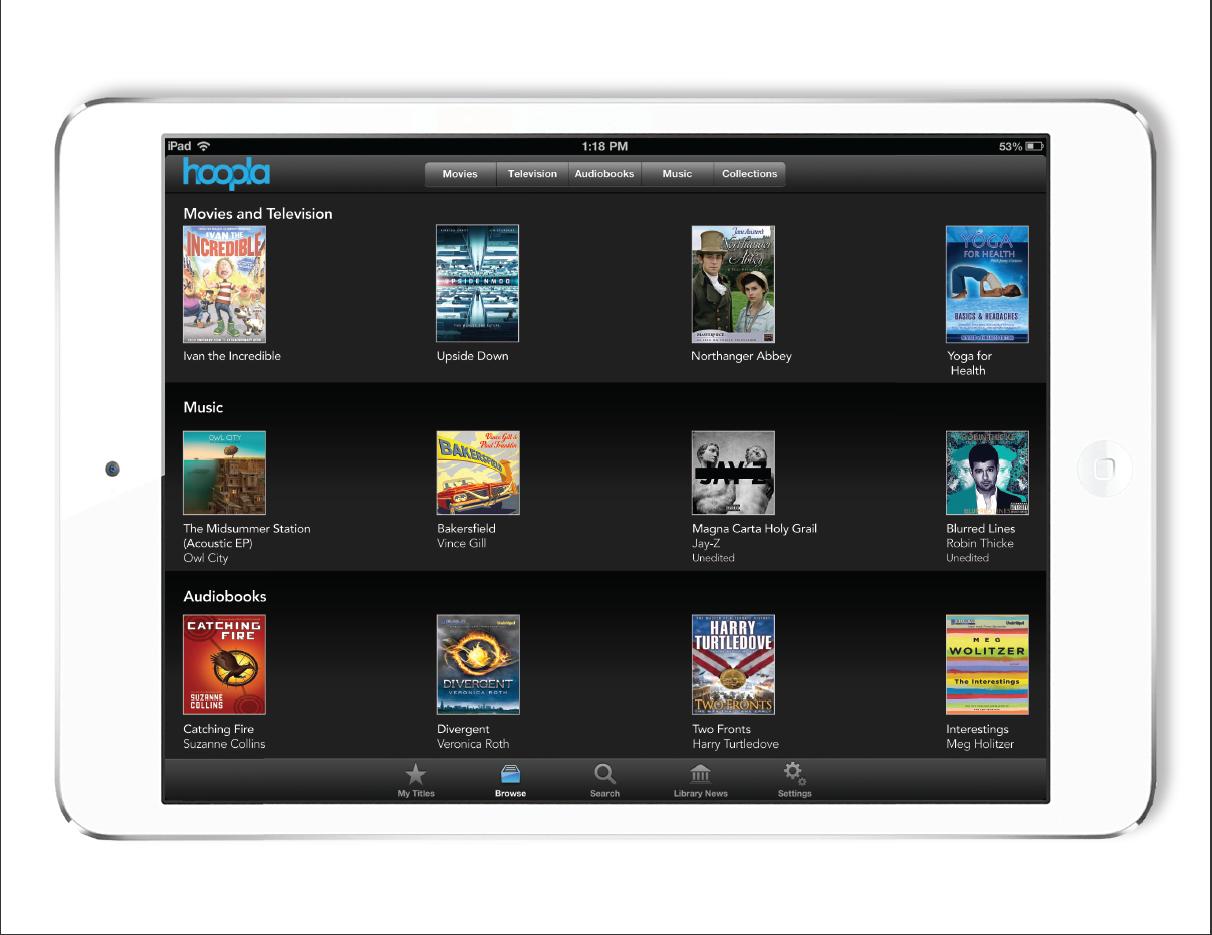03 Oct Hoopla Means Library At Your Fingertips
Are you ready for Library 2.0? Hoopla is an app service that works with Android and iOS to deliver digital library material. The app connects with public libraries across the country via library pin numbers. Users can download content that ranges from ebooks, audiobooks, music, movies and TV-shows. They even provide educational material. And of course it’s free. Hoopla is particularly excited about the potential for younger users.
Yesterday I did an interview with Hoopla’s founderJeff Jankowski:
You serve an impressive list of public libraries across the country. Do you think at some point you will serve the whole country?
Jankowski: Hoopla is a service of Midwest Tape, a media distributor with 25 years of experience of managing content for public libraries. It took three years of developing a platform different from it’s competitors in digital distribution. Hoopla goes beyond the one user, one book format of competitors, which is not leveraging the digital experience very well. With our system there is simultaneous access to all card holders. This way the library selection is empowered by the user instead of relying on speculative buying from the library.
Do you think there still will be a role for the librarian?
Jankowski: The librarian is still key in adding value for the consumer. They have the ability to build the collection and recommend picks., suggest young adult material etc. The digital platform is engineered to the libraries to maintain this function.
Hoopla not only covers much of Netflix’s content, but goes beyond by also providing educational materials such as SAT prep videos. Do you see Hoopla in some ways help revolutionize education?
Jankowski: Public education is a longstanding job of libraries. Hoopla strives to be mindful to the library experience, of which educational content is a central feature. We provide content for early education, preschool and homeschoolers. Currently we have all together 10 000 titles and 5000 more titles are under way. Both quality and quantity are important considerations.
Who uses hoopla? Which demographics and why?
Jankowski: So far we have all different kinds of users. Hoopla appeals to teenagers and college students with its music content. 80% of what is on the billboard is available through Hoopla. For instance the new artist Lorde from New Zealand is featured in our collection. Kids don’t have credit cards, but Hoopla makes it possible to listen without having to ask an adult to pay. We also have great young adult audiobooks, for instance the full Hunger Games triology. At three universities in the United States Hoopla provides free access to university material for the students.
In what type of communities will Hoopla have a particular impact?
Jankowski: The distribution of digital content to rural communities can make a tremendous change considering the savings in the cost of shipping physical material to sparsely populated areas. For example we serve Canada which have many rural communities, which otherwise would have limited access to free quality material. Digital access gives users so many more options. Hoopla is also important in serving economically challenged communities where people can’t get to the local branch. Hoopla gives a lot of options to reach out.
By what media do you think your content will be accessed in 2020?
Jankowski: It’s hard to say because technology changes so quickly now. But if we look at the past recent trends three technologies seem in particular to have empowered the consumer: internet, DVR and mobile. Everybody have their own screen now and can decide where and when content is to be consumed. Hoopla works with streaming over wifi or the user can download and consume the content in areas that have no internet access. (Hoopla is foreshadowing a trend where streaming services are allowing their material to also become downloadable.)
And do you think there still will be physical libraries in 2020?
Jankowski: Yes, I don’t see physical libraries going away. Libraries play a much larger role than many people are aware of. But their roles have changed. Today access to internet is crucial, so they provide access to necessary technology for those who don’t have. They serve as tech centers and provide learning and homework help. A good part of the population doesn’t know these services exist. The library is also a source of information that is not leveraged correctly. In my projects I have used the library myself as information providers. They will look up and call you back with an answer to what you need.
I think particularly for young audiences libraries provide a huge advantage to discover new material.
What is your favorite library memory?
Jankowski: In my house there were a lot of books growing up, but not many that I was interested in. So going to the library I could get access to the material I was interested in. For me that was particularly baseball and football. I remember being excited finding my own material. Being able to select my own material was a way to exercise my growing independence as a child. I really believe the library experience can help young people find their own voice. And I think Hoopla is a big step in that direction.



James Wolfensberger
Posted at 04:07h, 10 OctoberFantastic article and I’ll be looking into Hoopla further immediately! All news to me. Thank you!